Regional Food Business Centers
Updates and Office Hours
 The USDA Regional Food Business Centers is currently accepting applications from eligible organizations until November 22, 2022, at 11:59 pm EST. As a reminder, this program has a new webpage where you can access the following resources:
If you have questions on the Regional Food Business Centers, USDA AMS invites you to our weekly Office Hours, every Wednesday at 4:00 pm EST through November 16. AMS is using the registration list from the Office Hours sessions to populate a shared list of organizations that are interested in partnering on applications. If you would like to join this list, you can select that option when you register for a session.
For any additional questions after reviewing the RFA, please reach out to the team at regionalfoodcenters@usda.gov.
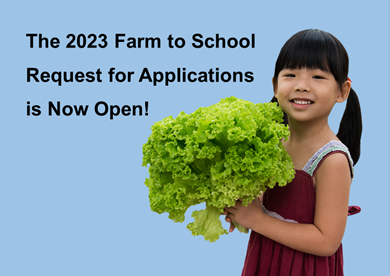
October is National Farm to School Month and USDA’s Food and Nutrition Service (FNS) recently opened their annual competition for the Farm to School Grant Program – an opportunity to help support the planning, developing, and implementing of farm to school initiatives. Since 2013, USDA has awarded $75 million in Farm to School Grants. These grants have funded a total of 1,019 projects across all 50 states, the District of Columbia, U.S. Virgin Islands, Guam, and Puerto Rico, and reached over 25 million students in more than 59,000 schools. Grants awarded through the program help incorporate local foods in the Child Nutrition Programs and connect students with nutrition and agriculture education through hands-on experiences, which can introduce them to careers in agriculture.
USDA expects to award up to $12 million in competitive grants to eligible entities through the Farm to School Grant Program in FY 2023 and recently released the Fiscal Year (FY) 2023 Farm to School Grant Request for Applications (RFA). Applications are due via www.grants.gov by 11:59pm ET on Friday January 6, 2023.
To learn more about the details of the RFA and get tips for submitting a competitive Farm to School Grant application, register for the upcoming webinars:
-
Getting Familiar with the FY 2023 Farm to School RFA — Tuesday, November 8th, 2022 at 2:30pm ET
-
Getting Your Grant Package Together — Wednesday, November 9th, 2022 at 2:30pm ET
Both webinars will be recorded and made available on the Resources for Grant Applicants Webpage.
To receive information and updates from USDA’s Farm to School Program, subscribe to the program’s monthly e-letter, The Dirt. Explore Farm to School Program resources like the Seeding Success Webinar Series, Fact Sheets, the Farm to School Census and more on the Farm to School program website.
|
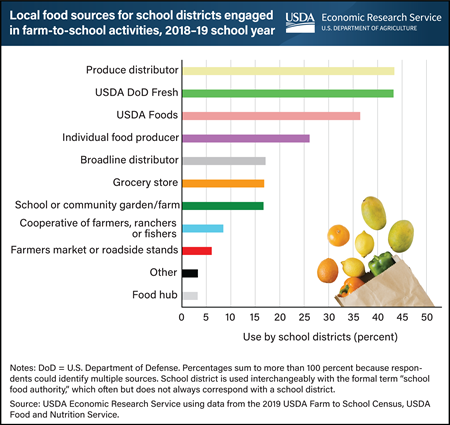
Farm to school programs encourage schools to buy fresh local products that support the area’s farm economy. During the 2018–19 school year, approximately two-thirds of U.S. school districts participated in farm to school activities, according to USDA Food and Nutrition Service’s 2019 Farm to School Census. Of the participating school districts, 78% reported purchasing some quantity of local food during the school year. USDA Foods, which refers to the commodities donated by USDA to school districts for use in school meals, was the third-most common source with 36% of respondents indicating they used the program to source local foods.
More information can be found on the Charts of Note on the Economic Research Service website. This chart is updated from a chart that appeared in Trends in U.S. Local and Regional Food Systems which was released on January 29, 2015.
|
In the past two decades Food Policy Councils (FPCs) have exploded across the US, tackling a range of food system challenges. A subset of FPCs have taken a uniquely regional approach, attempting to coordinate across state, county, tribal, or other boundaries, and strengthen the link between rural and urban stakeholders. This month, USDA AMS, in cooperation with Ohio State University, the John Hopkins Center for a Livable Future, and Colorado State University will launch a Community of Practice consisting of 11 councils nationwide to explore the role of FPCs in strengthening regional food systems.
 Currently, there is little guidance on working across rural, urban, and peri-urban areas. This cooperative seeks to learn whether a web of regional food producers, processors, distributors, and consumers generates opportunities for coordination between government entities, public, private, and civil society agencies. The Regional FPC Community of Practice will meet regularly over the next 18 months to identify challenges and test solutions by implementing strategies within their home region.
Participating FPCs include:
- Boston Food Access Council
- Cass Clay Food Partners
- Columbia Gorge Food Security Coalition
- Food Policy Council for Fresno County
- Greater Cincinnati Regional Food Policy Council
- Hudson valley Food System Coalition
- Just Foods Council of Collaborative of Nash and Edgecombe Counties
- Metropolitan Washington Food Policy Directors/Food Security Coordinators Work Group
- NWI Food Council
- Roanoke Foodshed Network
- Western Prairie Food Farm and Community Alliance
Further information on this ongoing project can be found on the Local Food Economics website.
This fall, USDA’s National Agricultural Statistics Service (NASS) will send the 2022 Census of Agriculture to nearly 3 million agriculture producers across the country. Survey codes for responding securely online will be sent next month, with paper questionnaires being mailed out in December.
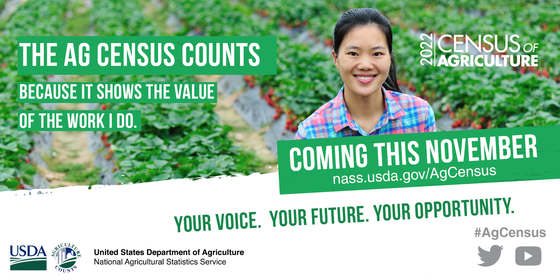 This census includes every operation – large or small, urban or rural – from which $1,000 or more of agricultural products are produced and sold, or would normally be produced and sold, in the ag census year. A complete count, with every producer getting and taking the opportunity to be represented in the data, is vital. This includes greenhouse growers, backyard chicken coop and horse owners, along with wheat, cattle, and dairy producers and more. The data not only influences business and supply chain logistics, but also informs policy and program decisions that directly impact producers, ag operations, and communities across the United States.
Get the word out about the 2022 Census of Agriculture using census Partner Tools. There, you can access frequently asked questions, explore past and current ag census data, download the wide variety of tools to help spread the word about the upcoming ag census, and more.
 USDA is expanding its People’s Garden Initiative to include eligible gardens nationwide. School gardens, community gardens, urban farms, and small-scale agriculture projects in rural, suburban and urban areas can be recognized as a “People’s Garden” if they register on the USDA website and meet criteria including benefitting the community, working collaboratively, incorporating conservation practices and educating the public. These locations will be indicated on a map on the USDA website, featured in USDA communications, and provided with a People’s Garden sign.
To learn more about signing up for this initiative, check out their website and this informational video.
Each month, we’re highlighting the work of Farmers Market and Local Food Promotion grant recipients.
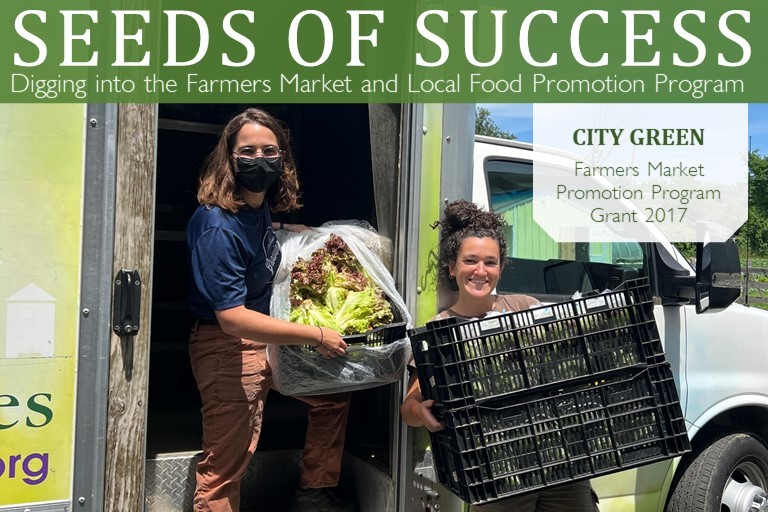 City Green
City Green is a 501(c)3 organization on a mission to revitalize urban areas through agriculture and educational programming in Clifton, New Jersey and surrounding areas. Their Good Food Bucks program and Veggie Mobile operation help run a nutrition incentive program to encourage families to spend their federal food benefit dollars at their local farmers’ market. City Green was awarded a Farmers Market Promotion (FMPP) grant in 2017 to promote these programs at farmers markets across New Jersey, connecting the state’s low-income population with local farm fresh fruits and vegetables. This grant funding expanded Good Food Bucks through communication strategies and marketing, while also growing the Veggie Mobile operation to have more farm stands, staff, and market outreach.
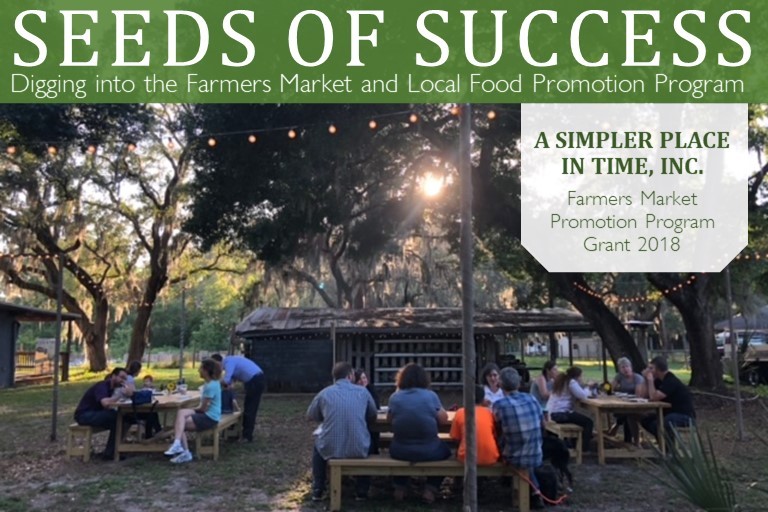 A Simpler Place
A Simpler Place was founded in 2011 and has grown into a year-round operation providing locally sourced items from small farms and producers in the Riverview, Florida area. A Simpler Place Farm & Market received their first Farmers Market Promotion (FMPP) grant in 2015 to start a weekly producer’s-only, outdoor, farmers market that included a pick-up point for their CSA. Then in 2018 they applied for a second FMPP grant that expanded their operations to a 5-day-a-week, year-round on-farm stand. They additionally sought to add an educational agritourism element to educate members of the community and increase consumer awareness of local agriculture through on-farm classes. They are now working on launching a Virtual Agritourism Classroom with eighteen total classes.
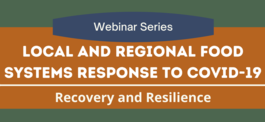 |
|
LRFS Resilience Webinar Livestream
Mark your calendar for the COVID Recovery and Resilience fall webinar series’ upcoming October livestream of the 2022 National Agricultural Marketing Summit. For further information and details on upcoming webinars, visit the webinar series webpage. |
Funding for a variety of eligible entities
NIFA’s From Learning to Leading: Cultivating the Next Generation of Diverse Food and Agriculture Professionals
Application Due Date: October 25, 2022
The primary goal of the From Learning to Leading: Cultivating the Next Generation of Diverse Food and Agriculture Professionals Program (NEXTGEN) is to enable 1890 institutions, 1994 institutions, Alaska Native-serving institutions and Native Hawaiian-serving institutions, Hispanic-serving institutions (specifically, the certified Hispanic-serving agricultural colleges and universities (HSACUs)), and insular area institutions of higher education located in the U.S. territories to build and sustain the next generation of the food, agriculture, natural resources, and human sciences (FANH) workforce including the future USDA workforce primarily through providing student scholarship support, meaningful paid internships, fellowships, and job opportunity matching, and also facilitating opportunities to learn the processes and pathways leading to training and employment in the federal sector. Visit their website for more information and application details.
FSA’s Increasing Land, Capital, and Market Access Program
Application Due Date: October 28, 2022
The United States Department of Agriculture (USDA) is making up to $300 million available for the Increasing Land, Capital, and Market Access Program through this funding opportunity. USDA is committed to funding projects that support a diverse set of farmers, ranchers, forest landowners, and operators (producers) on the edge of viability, moving them from surviving to thriving as they address core barriers to attain land, capital, and market access. USDA will achieve this goal by funding cooperative agreements or grants to organizations that will develop and run programs that are designed to align with and respond to land, capital, and market access needs of the target audience while concurrently providing wraparound technical assistance to ensure that program participants have the information, training, and customized support they require. Learn more on their webpage.
FSA’s Organic Certification Cost Share & Organic and Transitional Education and Certification Program
Application Due Date: October 31, 2022
Agricultural producers and handlers who are certified organic, along with producers and handlers who are transitioning to organic production, can now apply for the USDA Farm Service Agency’s Organic and Transitional Education and Certification Program (OTECP) and Organic Certification Cost Share Program (OCCSP). This will help producers and handlers cover the cost of organic certification, along with other related expenses.
USDA Regional Food Business Centers
Application Due Date: November 22, 2022
The U.S. Department of Agriculture (USDA), Agricultural Marketing Service (AMS), requests applications for the fiscal year (FY) 2022 USDA Regional Food Business Centers (Regional Food Centers). The Regional Food Centers will serve as the cornerstone of USDA’s development of local and regional supply chains. They will offer coordination, technical assistance, and capacity building support to small and mid-sized food and farm businesses, with the goal of creating a more resilient, diverse, and competitive food system. AMS will award cooperative agreements to regionally based partners to support USDA’s work on regional food supply chains. USDA is using approximately $400 million in funds authorized under the Consolidated Appropriations Act, 2021 to develop and implement the program, with approximately $360 million going directly to fund the Regional Centers. For more information visit the How To Apply page or Frequently Asked Questions.
RD’s Intermediary Lending Program
Application Due Date: Quarterly (September 30, December 31, March 31, June 30)
The Intermediary Lending Program provides 1 percent low-interest loans to local lenders or “intermediaries” that re-lend to businesses to improve economic conditions and create jobs in rural communities. USDA is offering priority points to projects that advance key priorities under the Biden-Harris Administration to help communities recover from the COVID-19 pandemic, advance equity, and combat climate change. Visit their website to learn more.
RD's Food Supply Chain Guaranteed Loan Program
Application Due Date: Applications accepted until funds are exhausted
The USDA RD Food Supply Chain Guaranteed Loan Program is a part of USDA's Build Back Better (BBB) initiative, authorized by the American Rescue Plan. This program guarantees loans of up to $40 million for qualified lenders to finance food systems projects, specifically for the start-up or expansion of activities in the middle of the food supply chain. The program will support new investments in infrastructure for food aggregation, processing, manufacturing, storage, transportation, wholesaling, and distribution. For more information visit the Rural Development page.
|